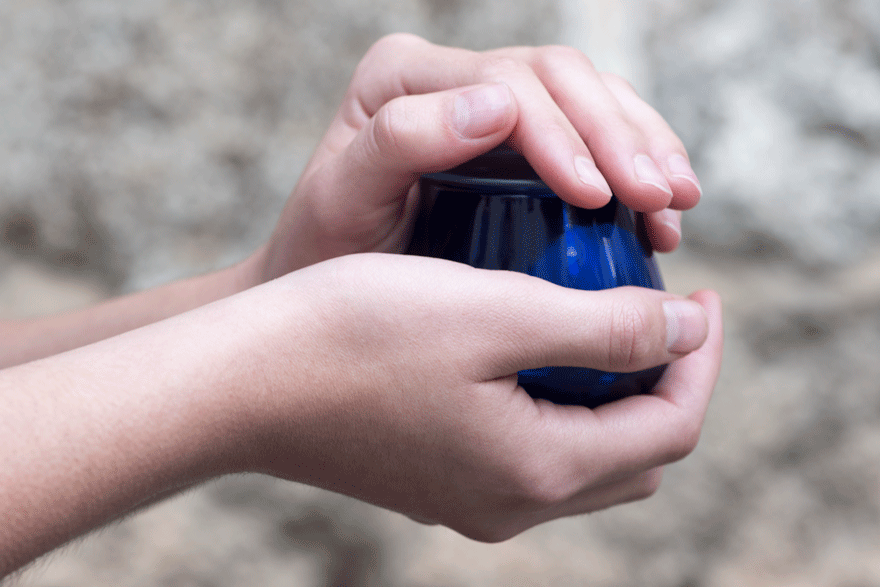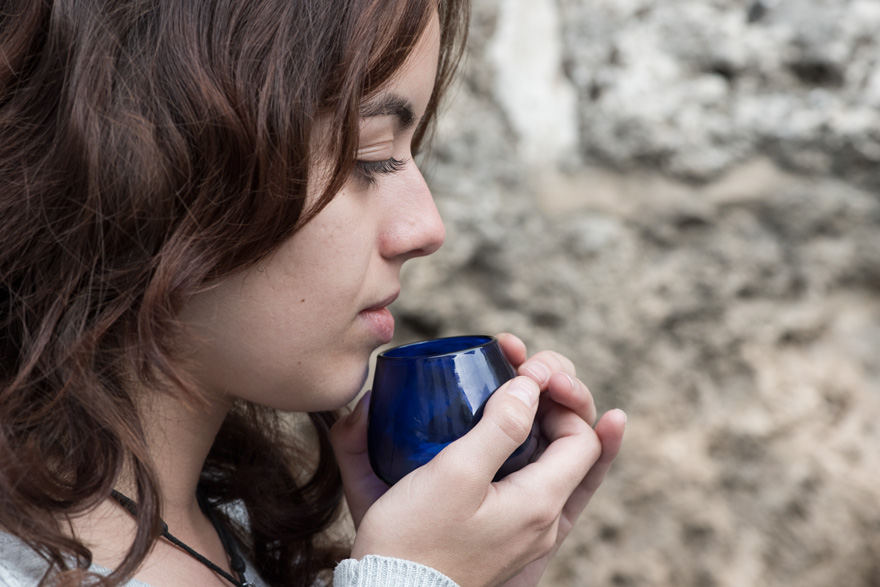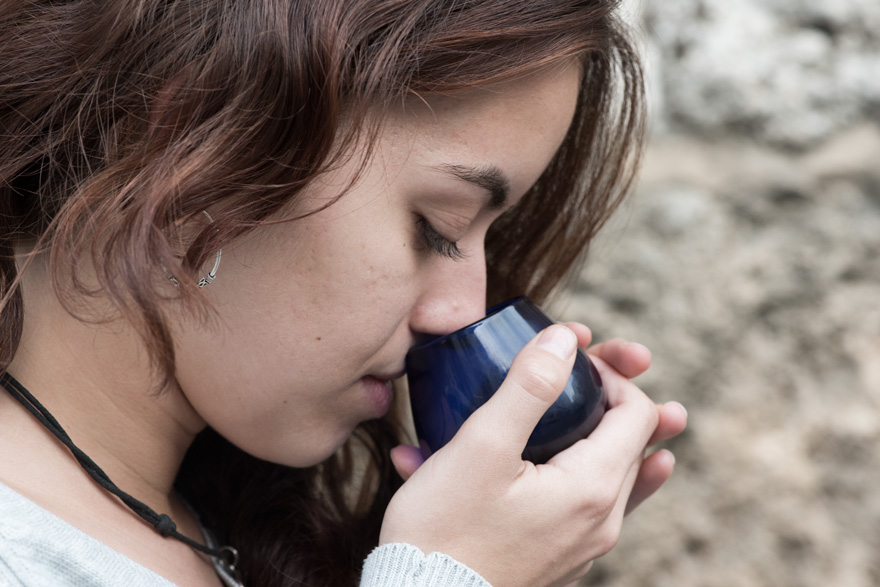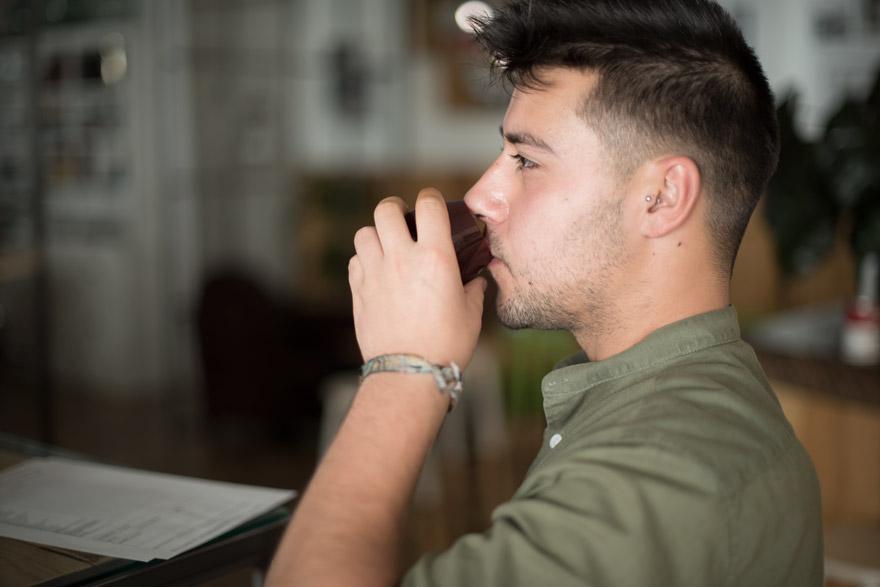You are standing in front of a tasting and sampling table of EVOO Sol Chiquito and you want to know how to taste the extra virgin olive oil? Well let me explain it to you quickly.
The first thing you have to do is pour a small amount of Sol Chiquito extra virgin olive oil in the cup. Usually the amount you pour in each cup is of 15 ml, but if you do not have a measuring glass, pour to approximately the same level indicated in the photograph.

Place the watch glass above the glass and maintain both between your hands whilst you carry on reading these instructions. What do we obtain by doing this? Well, we are essentially giving the oil some temperature so it can release its aromas with greater ease. Bear in mind that our body has a temperature of approximately 36 degrees and, unless you have really cold hands, the oil will reach , and will even exceed, 28 degrees, which is the temperature an official tasting oil should have.

There are three positive features and extra virgin olive oil should have:
- Fruity. It is the smell of the olive from which the extra virgin olive oil is obtained. Be aware that the EEVO is only the oily fraction of the olive juice, and like any precious juice, it must smell of the fruit it is made from. Thus, the fruitiness is nothing other than the smell of healthy olives.
- Bitter. It is one of the five flavors our tongue is capable of distinguishing. Five? You may be wondering. Bitter, sweet, salty, sour… what is the fifth? Well, umami; a Japanese word that means tasty. Out of the five flavors, only two can be present in the oil: bitter and sour. If it is sour, that means something went wrong in the development stage and hence we do not obtain an EXTRA virgin olive oil. But it is not the case. These oils are of very high quality and do not present even the smallest of defects. That said, if the bitter flavor is present, even if you find it strange, you have to consider it as a positive feature. The substances responsible for the bitterness in the oils are some of the polyphenols that the oil contains. For instance, we have oleuropein and hydroxytyrosol. The latter is especially beneficial for our health, as it is most likely the vegetal substance with the greatest antioxidant that exists and it is also bioavailable, It can reach all parts of our organism and exercise its healthy effect in our cells, protecting them from the effect of oxidation and delaying our ageing. So now you know not to give your back at the bitterness you find in these oils.
- Spicy. The fruitiness can be detected through our sense of smell, the bitterness through our sense of taste, what about spiciness? With our sense of touch through our mouth. Indeed, the spiciness is another positive feature of the oil. One of the substances responsible of this feeling is the oleocanthal; a phenol which has recently been discovered has a very important inflammatory effect, amongst other healthy claims.

Officially, the three positive features – fruity, bitter and spicy – are evaluated in a tasting. Nonetheless, when we want to categorize an AOVE with greater detail, we can decompose the fruitiness in other flavors. So, when you taste these oils, close your eyes and let your memories come to mind: the sound of the lawnmower that flooded the atmosphere with the smell of freshly cut grass; the hands of your granddad when he returned from collecting tomatoes and peppers from the garden; the kitchen in your house when your mother cooked artichokes… There are smells that flood our body and mind with past feelings and senses. Maybe you find some of those within these cups.
The oil is probably warm enough by now; it is ready to be tasted. Hold the watch glass securely and tilt the cup and spin it so its walls get covered in oil. Do not let the oil touch the watch glass. This way the smells will be released more easily. Place the cup under your chin – like in the photograph – and remove the watch glass to release the smells of the oil. If from this distance you are able to perceive the fruitiness, then on a scale from 1 to 10, the intensity will be above a 6. These will be the strongest aromas.

Any aromatic tinge of extra virgin olive oil that you have not identified when you put the cup below the chin, but that you identify when you put it under the mouth, as it appears in the photograph, will have an intensity between a 3 and a 6. These will be the middle aromas.

Finally, insert your nose into the cup. Those aromatic tinges that have not appeared before and you can identify now, will have an intensity between a 0 and a 3. These are the light aromas.

It is now time to take a small sip of the oil. The sense of taste and the sense of touch come into play now, although the sense of smell also continues to participate, since the aromas will reach your pituitary from the mouth through a retronasal pathway. Do you have to drink the whole cup? No, only a small sip is enough.Let the oil run through your tongue and try not to swallow it at the beginning, because if you are not used to tasting oil on its own, it will probably itch you in the throat and that is not a good place to quantify this feature. So, focus on the bitterness, on your tongue, and the spiciness, in your mouth, and breathe a little through the mouth so that the aromas reach your nose.

With this, you have finished the oil tasting. Now it would be convenient, before tasting the next oil, to eat some bread or, as is done in official tasting panels, a piece of apple, to “clean” the touch, taste and flavor of the previous one.
Surely you liked our Sol Chiquito extra virgin olive oils of early harvest, so do not waste them: put them on a plate and dip some rich pieces of bread in them.



